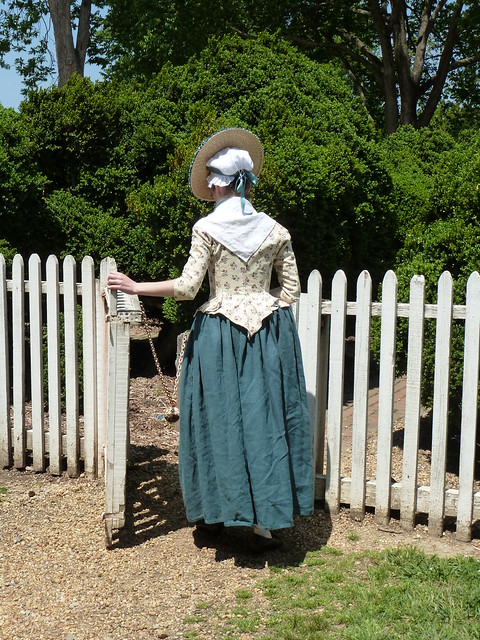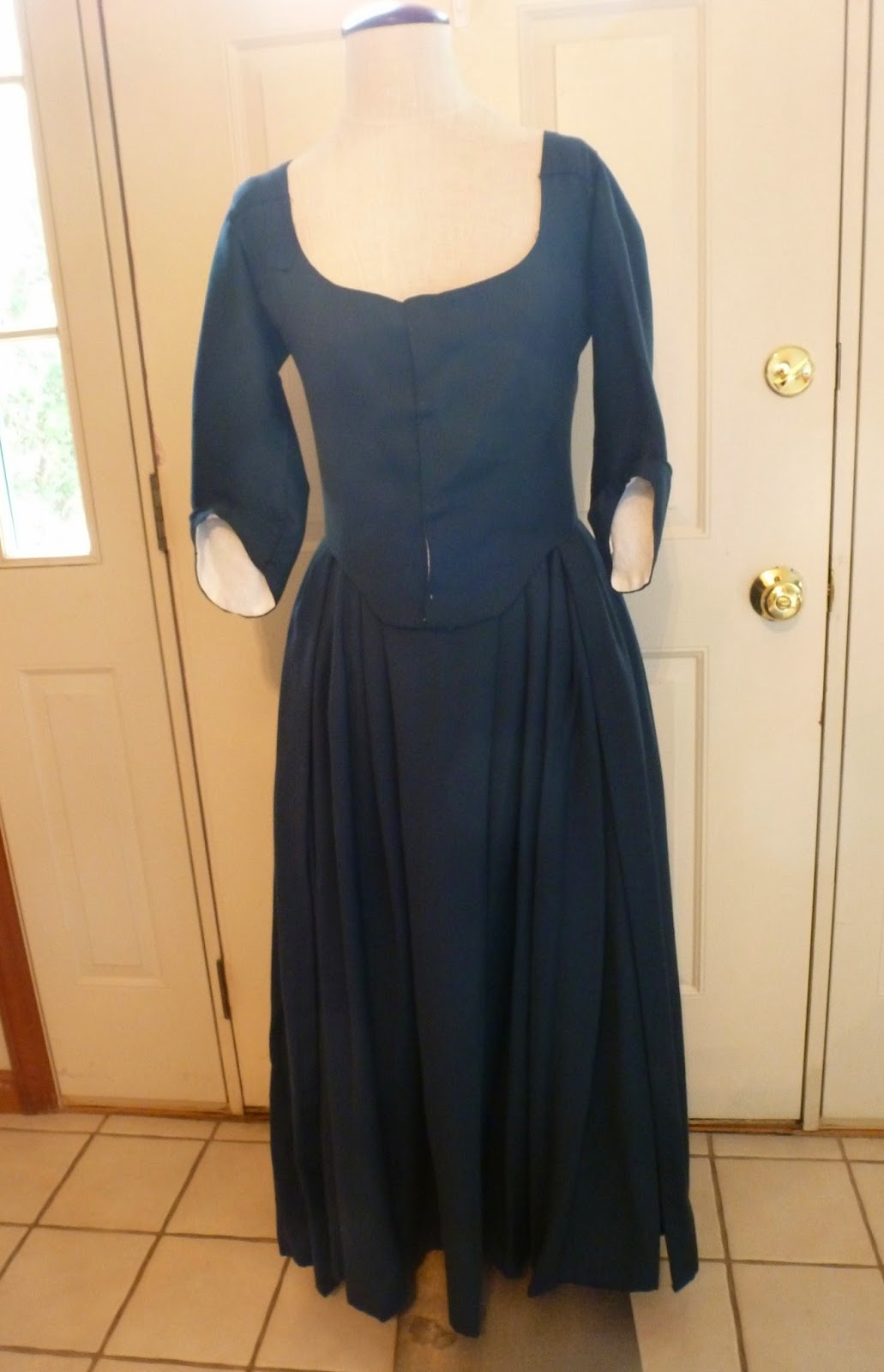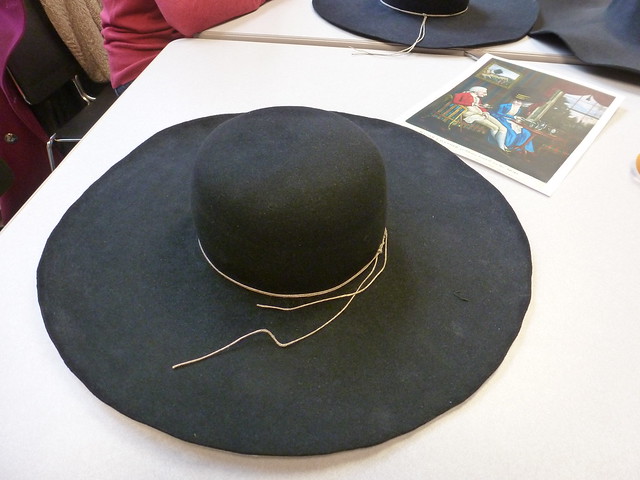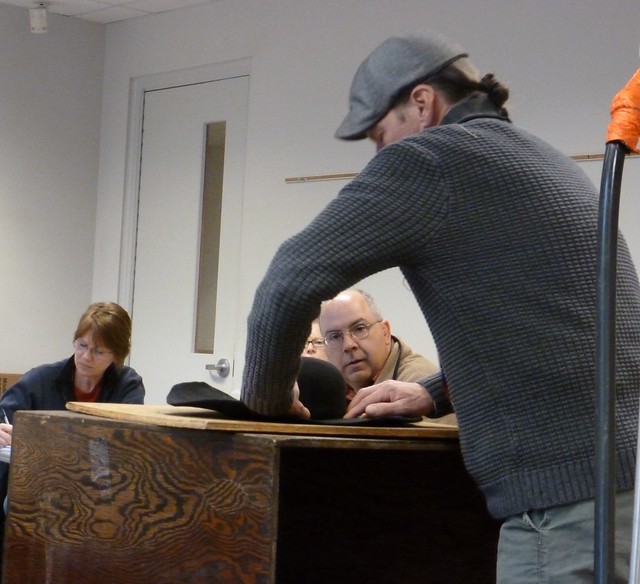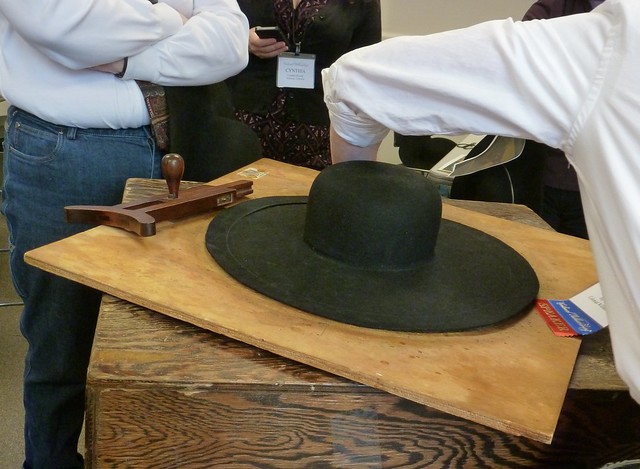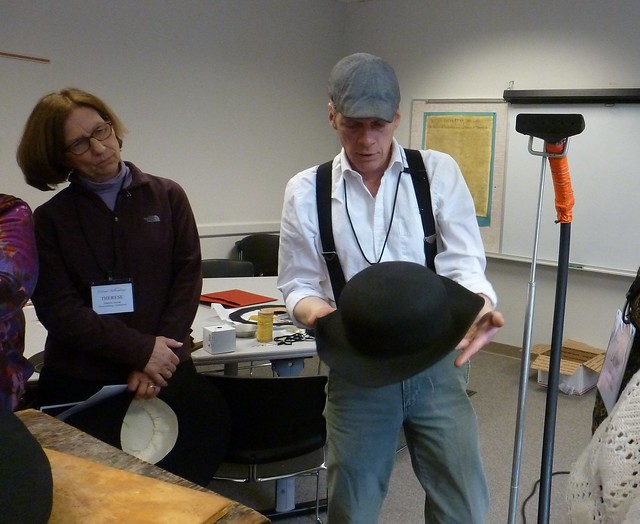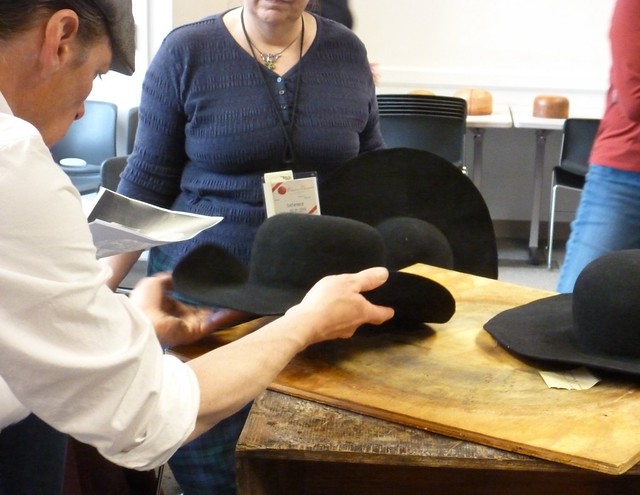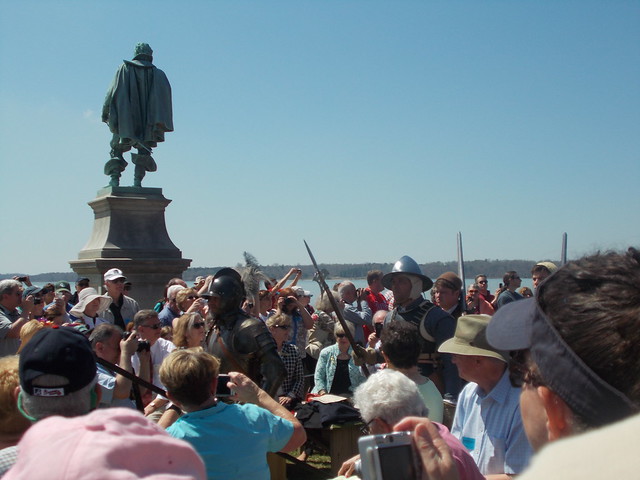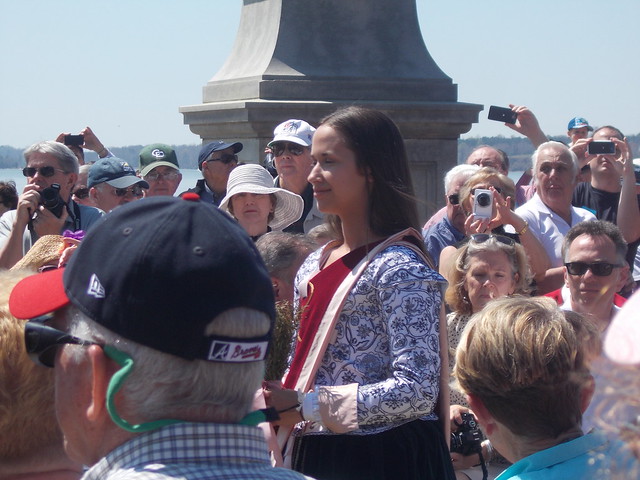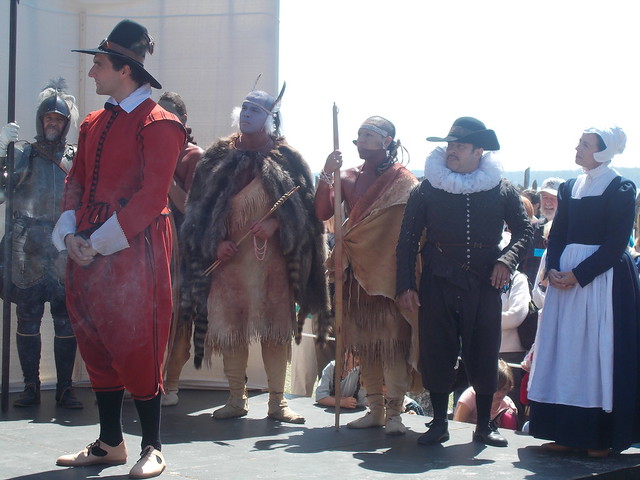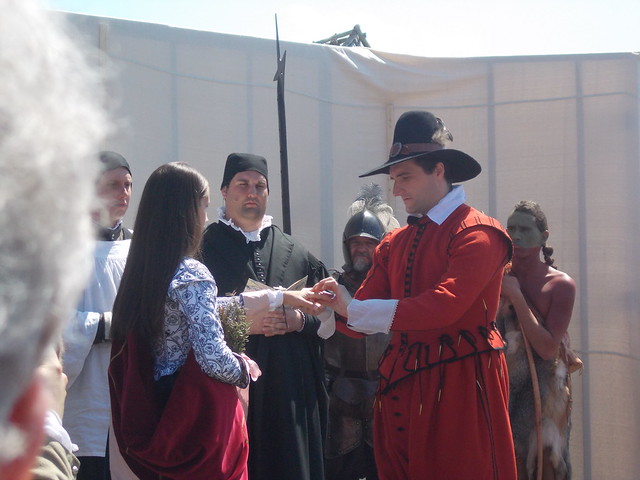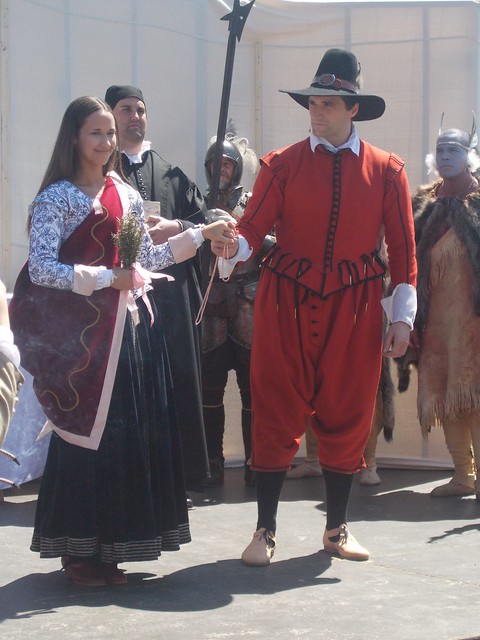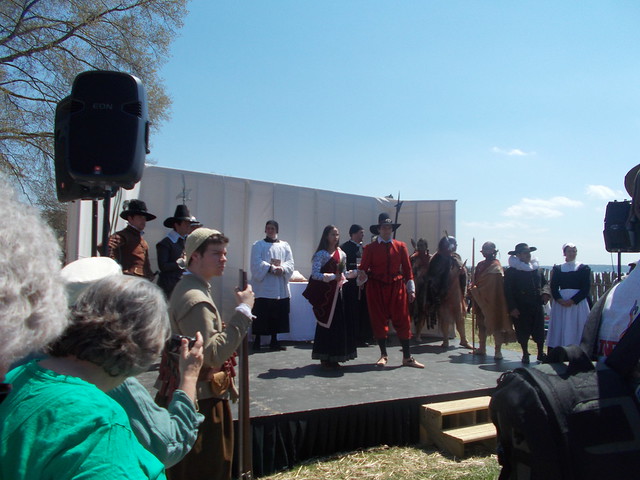For those of you in need of a new wardrobe for the campaign season, we currently have listed on Ebay three of our earliest 18th century creations.
The first is Ashley's first "Costume Close-up jacket," the first completely hand-sewn jacket I ever made, and the first project I created using a scaled-up pattern from an original garment. For more on the jacket's fabric and construction details, check out its previous Threaded Bliss posts here and here. Clicking on the image below will bring you to the current Ebay listing, which includes condition and measurement details.
The second item on offer is Ashley's sea green fitted-back gown. Like the jacket, this garment, too, represents multiple firsts for us. This was the first gown I'd sewn completely by hand, and this was the first petticoat Ashley ever completed by hand. This is also the first gown I draped from start to finish. I'd purchased the fabric on sale, and Ashley fell in love with the color and wanted it, so I decided it was time for an experiment. I started pinning and folding and cutting and pleating and trimming, and taught myself to drape in the process, and she ended up with this gown, which remained her favorite for years. The original post on it can be found here, and the picture below will link you to the Ebay listing. Measurements and condition details can be found there.
The third item is another gown, the first I ever made completely by hand for myself. It's made of a beautiful medium-weight dark indigo wool that has a lovely heavy drape to it that helps give the gown an ideal period shape. I wore this gown only once (to what was probably the hottest reenactment we've ever been to) and realized only long after the fact that I never even got a picture of myself wearing it, which is why it never got its own Threaded Bliss treatment. Ah well, that makes it perfect to pass on to someone else, who will be able at long last to give it an identity. :-) The listing is linked through the picture below.
If you'd like any additional details or pictures of any of these items, please let us know and we'll be happy to share them. We very much hope these will go to good homes and be used and loved for many years to come!
Friday, April 25, 2014
Sunday, April 20, 2014
"Millinery Through Time" Conference: Day Four: The Wokshop Day
The fourth and final day of the "Millinery Through Time" conference was an option day consisting of a selection of workshops on various millinery items or accessories. With eight to pick from and each being offered at the same time, you can imagine what a difficult time we had making our final choices!
In the end, we both opted to take Jay Howlett's workshop in felt hat basics. We were thrilled to have the opportunity to make hats for our in-progress riding habits, and with appropriate, accurate felt hats for ladies being nearly impossible to come by, we simply couldn't pass up this chance to learn how to make our own.
To save some time on the workshop day itself, we had each forwarded our individual head measurements to Mr Howlett so that he could prepare custom-sized hat blanks for us before we arrived. Though our basic hat shape was already done, he began the workshop by demonstrating the techniques he used to block our blanks, sharing some tricks of the trade and explaining some thrifty methods we could use to achieve the same process for ourselves. We talked about period felt hats - materials, descriptions, terms for the parts of the hat itself - and then proceeded to learn how to line our hats to help protect the felt from hair oils, powders, and sweat (hey, they're for riding, after all!).
Once we'd all finished stitching in our linen linings, we examined a large collection of period images and discussed the differences in styles in hats that were seen across the last half of the eighteenth century. Once we'd each selected our personal favorite style, Mr Howlett set to work helping us to capture it on our own hat, showing us how to trim and finish the brim, and how to steam and shape it to match our respective sources. Finally, we talked briefly about trim options and various techniques for attaching that trim. Let's just say it involves lots and lots and lots of feathers! :-)
We both left so excited to have our hats so close to being finished, and newly-motivated to get back to work on our riding habits. We're very much looking forward to seeing how our looks pull together from head to toe. So now...back to those waistcoats and jackets!
In the end, we both opted to take Jay Howlett's workshop in felt hat basics. We were thrilled to have the opportunity to make hats for our in-progress riding habits, and with appropriate, accurate felt hats for ladies being nearly impossible to come by, we simply couldn't pass up this chance to learn how to make our own.
To save some time on the workshop day itself, we had each forwarded our individual head measurements to Mr Howlett so that he could prepare custom-sized hat blanks for us before we arrived. Though our basic hat shape was already done, he began the workshop by demonstrating the techniques he used to block our blanks, sharing some tricks of the trade and explaining some thrifty methods we could use to achieve the same process for ourselves. We talked about period felt hats - materials, descriptions, terms for the parts of the hat itself - and then proceeded to learn how to line our hats to help protect the felt from hair oils, powders, and sweat (hey, they're for riding, after all!).
Once we'd all finished stitching in our linen linings, we examined a large collection of period images and discussed the differences in styles in hats that were seen across the last half of the eighteenth century. Once we'd each selected our personal favorite style, Mr Howlett set to work helping us to capture it on our own hat, showing us how to trim and finish the brim, and how to steam and shape it to match our respective sources. Finally, we talked briefly about trim options and various techniques for attaching that trim. Let's just say it involves lots and lots and lots of feathers! :-)
Adjusting the size of the brim to match the style of a period image.
My hat beginning to take shape!
Ashley's hat beginning to look like it's inspiration image.
We both left so excited to have our hats so close to being finished, and newly-motivated to get back to work on our riding habits. We're very much looking forward to seeing how our looks pull together from head to toe. So now...back to those waistcoats and jackets!
Sunday, April 6, 2014
Recreating the Wedding of Pocahontas and John Rolfe
In honor of the 400th anniversary of the wedding of Pocahontas and John Rolfe, Historic Jamestowne is hosting a number of special events. Yesterday, I was fortunate enough to attend a reenactment of their wedding ceremony at Jamestowne Island. It was the perfect day for a wedding, with the sun shining bright over the James River. I'd never been to the site before, and had some time prior the ceremony to explore before the big event, so there's more to come on that in my next post. But back to the wedding...!
A crowd was very quickly building up around the ceremony stage, so I found a spot off to the side and waited excitedly with the others. We were entertained with a few tunes from two musicians, followed by an introduction by Abigail Schumann. She set the scene by explaining how at the Jamestown Church "about the fifth of April" in 1614, the union of Pocahontas and John Rolfe marked the beginning of a peaceful period between the English settlers and Powhatan.
The wedding party filed down the center aisle to the front stage for the ceremony. While the ministers were reciting the wedding vows, the other members of the wedding party offered their own insight to the union. It was especially fun to see the wedding jacket that was made for the event by the Colonial Williamsburg Costume Design Center staff, with help with several volunteers. The jacket, which is based on this extant picture in the V&A, is entirely hand-embroidered in black linen thread and features stylized designs based on the plants and animals that populated the Jamestown region during the early seventeenth century.
Below are a few photos from the ceremony:
A crowd was very quickly building up around the ceremony stage, so I found a spot off to the side and waited excitedly with the others. We were entertained with a few tunes from two musicians, followed by an introduction by Abigail Schumann. She set the scene by explaining how at the Jamestown Church "about the fifth of April" in 1614, the union of Pocahontas and John Rolfe marked the beginning of a peaceful period between the English settlers and Powhatan.
The wedding party filed down the center aisle to the front stage for the ceremony. While the ministers were reciting the wedding vows, the other members of the wedding party offered their own insight to the union. It was especially fun to see the wedding jacket that was made for the event by the Colonial Williamsburg Costume Design Center staff, with help with several volunteers. The jacket, which is based on this extant picture in the V&A, is entirely hand-embroidered in black linen thread and features stylized designs based on the plants and animals that populated the Jamestown region during the early seventeenth century.
Below are a few photos from the ceremony:
The wedding party begins walking down the aisle.
Pocahontas, as portrayed by Wendy Taylor
Another view of the beautiful wedding jacket.
Members of the wedding party behind John Rolfe.
Pocahontas and John Rolfe
The happy couple!
A lovely summary about the history of the marriage and the story behind this special project can be found here on Colonial Williamsburg's page. You can see video of the event at the link as well.
If you'd like to see additional in-progress and close-up pictures of Pocahontas's incredible jacket, Burnley and Trowbridge posted several sets of photos on their facebook page. Futher information can also be found on Colonial Williamsburg's "wedding jacket" page. And as always, you can find more of my photos in our flickr set!
Friday, April 4, 2014
"Millinery Through Time" Conference: Day Three
Day Three of the "Millinery Through Time" conference maintained the trend of impressive and inspiring presentations. Paper after paper, lecture after lecture continued to introduce some pretty incredible research. The range of topics alone was staggering, and I only wish it could have lasted another day (or two or five) because there was just so much good stuff to soak up in such a short amount of time!
The talks before lunch spanned topics that included everything from early American shoe-makers' labels to an overview of the popular fashion for turbans at the turn of the nineteenth century. The morning saw two stand-out moments for me, however, the first of which was Mela Hoyt-Heydon's consideration of the use of artificial flowers in eighteenth-century millinery. As fascinating as that is, what really made her talk so prodigiously awesome was that she then proceeded not only to discuss how these flowers were made in the period, but also how those historical methods can be reproduced today. I think the entire auditorium was just in awe, and I left fully motivated to go forth and make flowers in abundance! This made me (and probably everyone else who hadn't signed up!) really, really wish I'd elected to do Mela's velvet flower workshop scheduled for the following day... ;-)
The other notable paper from the morning was CW apprentice Abby Cox's exploration of the westward "expansion" of the millinery and dress-making trades at the beginning of the nineteenth century. Using information culled from city directories, she literally mapped the growth and change of the fashion trades in a completely novel way. Her approach was intriguing and highly original, using physical landscapes and spatial readings to document how "millinery" and "the milliner" evolved, simultaneously expanding and contracting her business to meet shifting socio-economic and fashion trends.
After lunch, we continued our chronological movement forward into the nineteenth and twentieth centuries. Samantha McCarty (of Couture Courtesan) presented an inquiry into a long-overlooked and under-researched area of Civil War-era clothing: mourning millinery and accessories. As the "visible signs of sorrow," mourning collars, cuffs, and bonnets, specific fabrics and colors all occupied a broad (and lucrative) spectrum of the fashion industry. In an age when clothing was "read" and interpreted as an outward expression of an individual's place in society, tiny details like those distinguished by Samantha spoke volumes. She's hinted that there's a mountain of additional research left to pursue, and I know I, for one, am most eager to hear more!
Then it was on to the final panels on the conference schedule. From a study of the life and career of a single, enterprising milliner in turn-of-the-century Newfoundland, to a consideration of the millinery trade in Ontario, to a glamorous overview of the distinctive, defining style of American millinery in the years surrounding WWII, to a first-hand glimpse into the career of modern-day milliner-artist Ignatius Creegan, each of the speakers that contributed to the concluding afternoon helped to round out the incredible range of scholarly contributions on millinery and fashion history that we'd experienced over the course of the two previous days. I sincerely hope that it won't take another sixty years before we get the opportunity to do this again! If this conference confirmed anything for me, it's the sheer wealth of untapped information left to be uncovered in the study of historical fashion.
Many thanks to all who contributed their knowledge, skills, and time to make this conference such a rare and special treat!
The talks before lunch spanned topics that included everything from early American shoe-makers' labels to an overview of the popular fashion for turbans at the turn of the nineteenth century. The morning saw two stand-out moments for me, however, the first of which was Mela Hoyt-Heydon's consideration of the use of artificial flowers in eighteenth-century millinery. As fascinating as that is, what really made her talk so prodigiously awesome was that she then proceeded not only to discuss how these flowers were made in the period, but also how those historical methods can be reproduced today. I think the entire auditorium was just in awe, and I left fully motivated to go forth and make flowers in abundance! This made me (and probably everyone else who hadn't signed up!) really, really wish I'd elected to do Mela's velvet flower workshop scheduled for the following day... ;-)
The other notable paper from the morning was CW apprentice Abby Cox's exploration of the westward "expansion" of the millinery and dress-making trades at the beginning of the nineteenth century. Using information culled from city directories, she literally mapped the growth and change of the fashion trades in a completely novel way. Her approach was intriguing and highly original, using physical landscapes and spatial readings to document how "millinery" and "the milliner" evolved, simultaneously expanding and contracting her business to meet shifting socio-economic and fashion trends.
After lunch, we continued our chronological movement forward into the nineteenth and twentieth centuries. Samantha McCarty (of Couture Courtesan) presented an inquiry into a long-overlooked and under-researched area of Civil War-era clothing: mourning millinery and accessories. As the "visible signs of sorrow," mourning collars, cuffs, and bonnets, specific fabrics and colors all occupied a broad (and lucrative) spectrum of the fashion industry. In an age when clothing was "read" and interpreted as an outward expression of an individual's place in society, tiny details like those distinguished by Samantha spoke volumes. She's hinted that there's a mountain of additional research left to pursue, and I know I, for one, am most eager to hear more!
Then it was on to the final panels on the conference schedule. From a study of the life and career of a single, enterprising milliner in turn-of-the-century Newfoundland, to a consideration of the millinery trade in Ontario, to a glamorous overview of the distinctive, defining style of American millinery in the years surrounding WWII, to a first-hand glimpse into the career of modern-day milliner-artist Ignatius Creegan, each of the speakers that contributed to the concluding afternoon helped to round out the incredible range of scholarly contributions on millinery and fashion history that we'd experienced over the course of the two previous days. I sincerely hope that it won't take another sixty years before we get the opportunity to do this again! If this conference confirmed anything for me, it's the sheer wealth of untapped information left to be uncovered in the study of historical fashion.
Many thanks to all who contributed their knowledge, skills, and time to make this conference such a rare and special treat!
Subscribe to:
Posts (Atom)

